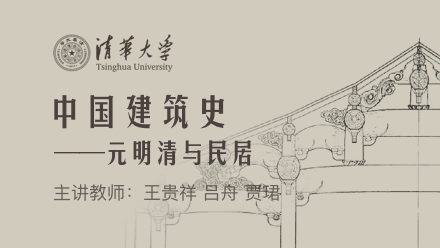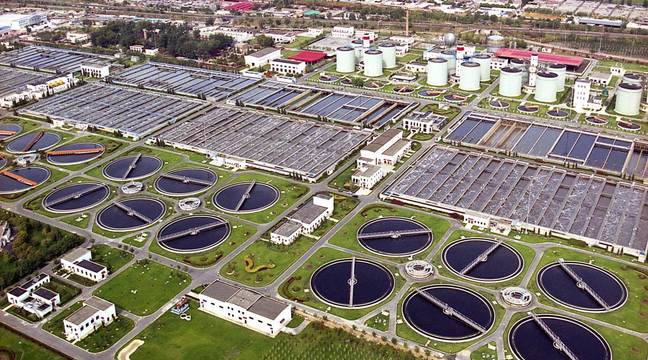
当前课程知识点:History of Chinese Architecture Part II > 11 An introduction to architecture of the Qing Dynasty and Imperial architecture > Section 1 > Blank HTML Page
返回《History of Chinese Architecture Part II》慕课在线视频课程列表
最基本的参考
Basic references
梁思成,《清式营造则例》
孙大章,《中国古代建筑史》第五卷清代建筑
王璞子,《工程做法注释》
姚承祖原著,张至刚(张镛森)增编,刘敦桢校阅,《营造法原》
Liang Sicheng. Qingshi Yingzao Zeli (Qing Structural Regulations)
Sun Dazhang. History of Ancient Chinese Architecture, Vol. V, Architecture of the Qing Dynasty
Wang Puzi. Gongcheng Zuofa Zhushi (Notes to the Qing Structural Regulations)
Yao Chengzu. Zhang Zhigang ed. Liu Dunzhen co. Yingzao Fayuan (Origin of Architectural Methods
专门化参考,关于清代匠作工艺的总结 Specialized references
马炳坚,《中国古建木作营造技术》
刘大可,《中国古代建筑瓦石营法》
李全庆 刘建业,《中国古建筑琉璃技术》
蒋广全,《中国清代官式建筑彩画技术》
Ma Bingjian. Carpentry Work in Ancient Chinese Architecture
Liu Dake. Masonry Work in Ancient Chinese Architecture
Li Quanqing and Liu Jianye. Glaze Work in Ancient Chinese Architecture,
Jiang Guangquan. Colored Paintings in the Official-style Architecture of the Qing Dynasty
最重要的研究素材 Archival documents
清实录、清会典、清史稿
清代皇家营造档案:奏销档、活计档、陈设档等,中国第一历史档案馆、故宫博物院图书馆;
清宫样式房档案——以样式雷家族收藏为核心:中国国家图书馆、故宫博物院、中国第一历史档案馆、清华大学等
Veritable records, codes and draft histories of the Qing Dynasty
Archives on construction projects of the Qing Dynasty: Zouxiao dang (the archives on the emperor’s orders), Huoji dang (the records on the construction works) and Chenshe dang (the records on furnishing) in the collection of the First Historical Archives of China and the Palace Museum
跨越朝代、基于清代文化的研究专题
陈志华、陆元鼎等先生针对以清代为主的地方建筑的专门化研究
王其亨等先生关于风水理论、陵寝建筑的研究
紫禁城学会等研究主体针对清代皇家建筑的专门化研究
关于清代文化中心的参考文献
《清史稿》地理志
牛平汉,《清代政区沿革综表》,中国地图出版社,1990
紫禁城出版社,故宫博物院、柏林马普学会科学史所合编《宫廷与地方——十七至十八世纪的技术交流》,紫禁城出版社
G.William Skinner,The City in Late Imperial
China.Stanford University.Press.1997
赵世瑜,《腐朽与神奇:清代城市生活长卷》,湖南人民出版社
曹树基,《清代北方城市人口研究_兼与施坚雅商榷》,《清代江苏城市人口研究》,《清代中期的江西人口》
Palace Museum and the International Max Planck Research School of Germany. The Imperial Court and the Local: Technical Exchanges in the 17th and 18th Centuries. Beijing: Forbidden City Press.
Cao Shuji. Study on the Population in North China of the Qing Dynasty and the Dialogue with William Skinner; Study on the Urban Population in Jiangsu of the Qing Dynasty; and Population in Jiangxi of the Mid-Qing Dynasty.
Niu Pinghan. Administrative Zones in the Qing Dynasty
Zhao Shiyu. Decadence and Miracles: Urban Life of the Qing Dynasty
返回《History of Chinese Architecture Part II》慕课在线视频列表
-Section 1
--Xanadu and Dadu of the Yuan Dynasty
--Religious Buildings of the Yuan Dynasty
--Buildings of Science and Technology in the Yuan Dynasty
-Section 2
--Reconstruction of the Ming System and an Overview of Its Cities and Architecture
--Cities and Towns Outside the Capitals in the Ming Dynasty
-Homework
-Section 1
--Forbidden City of Beijing in Ming Dynasty
--Imperial Altars and Temples of Beijing in Ming Dynasty
--Temple of Confucius in Qufu, Ming Dynasty
--Ming Xiaoling Tomb in Nanjing and the Ming Tombs in Changping
-Section 2
--The Buddhist Architecture of Ming Dynasty
--Taoist architecture of the Ming Dynasty
--Architecture of the Educational Institution of Ming Dynasty
-Homework
-Section 1
--An introduction to architecture of the Qing Dynasty1
--An introduction to architecture of the Qing Dynasty 2
-Section 2
-Section 3
-Homework
-Section 1
--Cities and urban facilities in the Qing Dynasty
--Government office mansions and architectural rules1
--Government office mansions and architectural rules 2
-Section 2
--Temples and altars, religious architecture and spiritual life
--Commercial architecture and econimic life
--Theaters and recreational life
-Homework
-Section 1
--Architecture: Europe and China & Imperial Specifications for State Buildings
-Section 2
--The architectural artisans 1
--The architectural artisans 2
--The architectural artisans 3
-Section 3
--Appreciation and Analysis of a Few Examples1
--Appreciation and Analysis of a Few Examples 2
--Appreciation and Analysis of a Few Examples 3
-Homework
-Section 1
--Introduction to the Chinese classical gardens
--The imperial gardens in Ming and Qing dynasties 1
--The imperial gardens in Ming and Qing dynasties 2
-Section 2
--Private gardens in Jiangnan (the regions south of Yangtze River)
--Private Gardens in Lingnan regions
--Private Gardens in North China
-Homework
-Section 1
--A brief history of the Chinese vernacular architecture
--The courtyard house of the northern China
--Tingjing style vernacular dwelling in the regions south of the Yangtze River
-Section 2
--Tingjing style folk dwellings of the southern China
--The Hakka earthen house in the southeastern China
--Cave dwellings in the Loess Plateau
--The architecture achievement of Chinese traditional vernacular dwellings
-Homework
-Section 1
--Residential buildings of the Manchu and Chaoxian (Korean) ethnic groups
--Architecture of the Uygur ethnics in Xinjiang
-Section 2
--Tibetan architecture in Tibet
--Multi-ethnic Architectures in the Southwest Regions
-Homework




